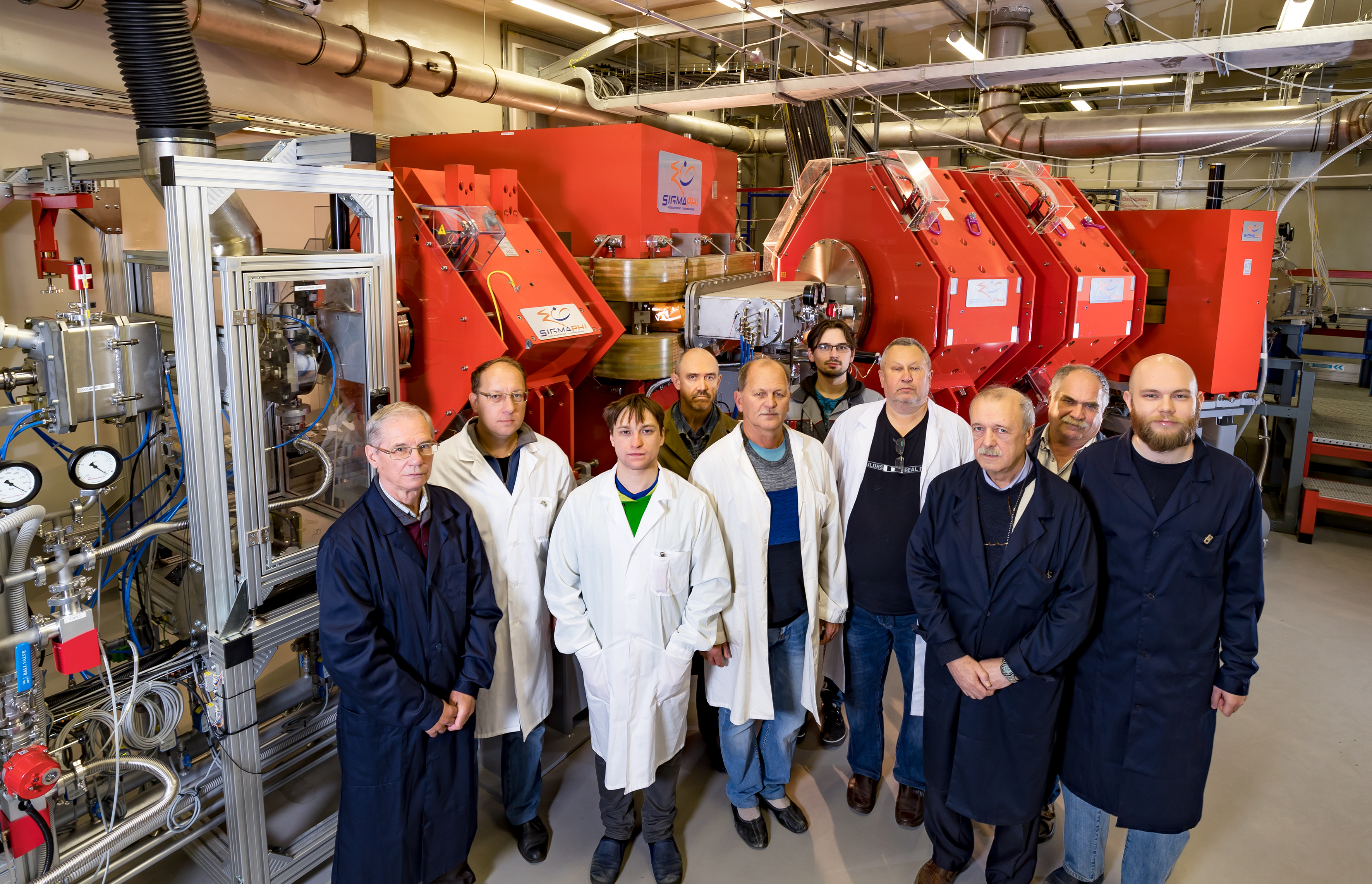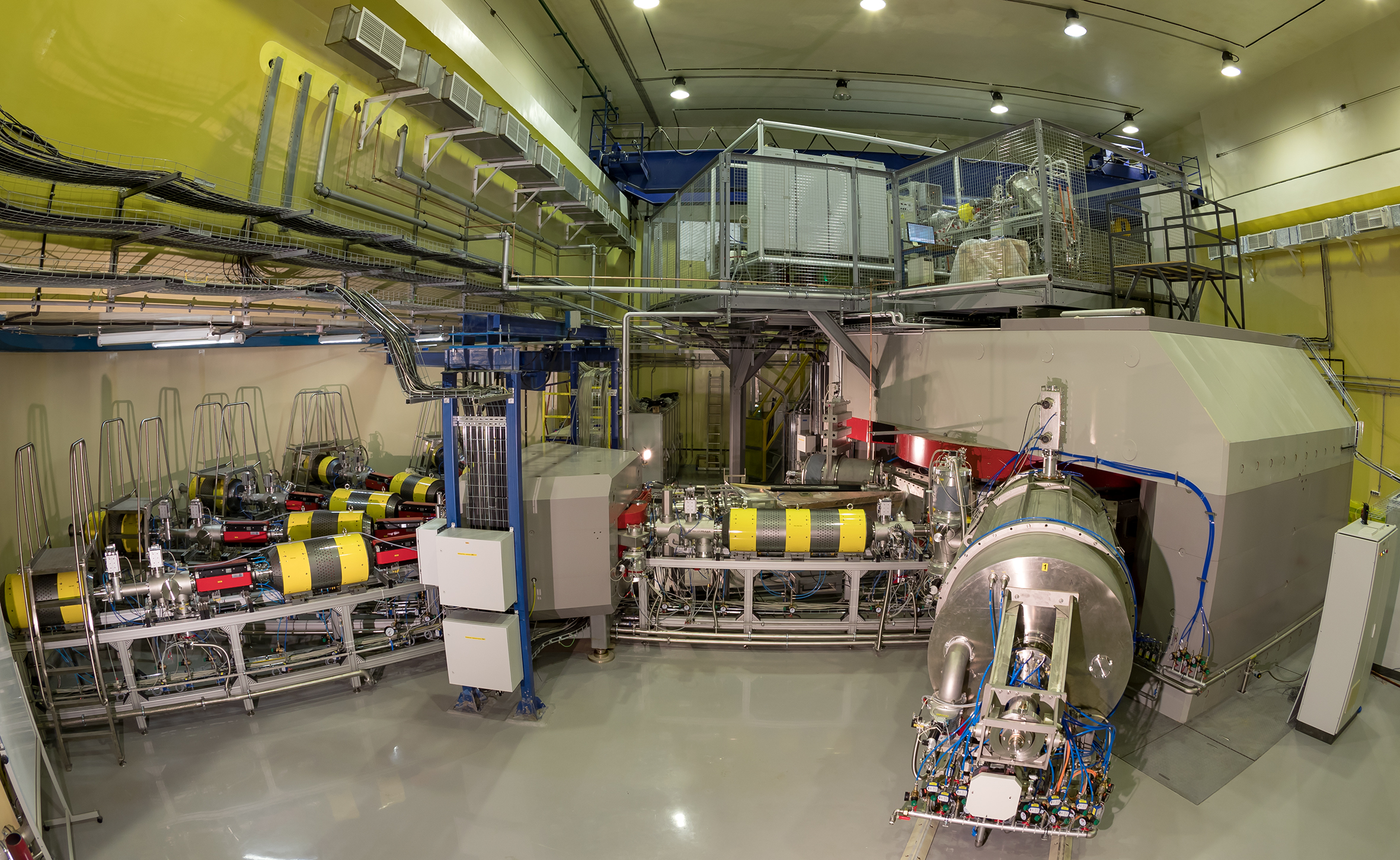Livermorium-288 synthesised at FLNR JINR for first time
News, 23 October 2023
At the Superheavy Element Factory in the Flerov Laboratory of Nuclear Reactions of JINR, an event of the production of a previously unknown isotope livermorium 288 (Element 116 of the Periodic Table) was registered. A unique atom was born as a result of the fusion of Chromium-54 and Uranium-238 nuclei in an experiment to prepare for the synthesis of the Element 120 — one of the most important tasks of the SHE Factory and FLNR as a whole. The lifetime of the new isotope turned out to be just under one millisecond.
 The team of scientists who co-authored the discovery in front of DGFRS-II Separator at the SHE Factory
The team of scientists who co-authored the discovery in front of DGFRS-II Separator at the SHE Factory
In the second half of September, an experiment on the measurement of the fusion cross section (probability of production) of nuclei in reactions of a Chromium-54 beam with a Uranium-238 target was to be carried out. Such collisions can produce various isotopes of the element 116 Livermorium. This experiment prepares the basis for the synthesis of element 120 and will continue for another month. As a result, experience of long-term work with a chromium beam will be obtained and the cross section for the synthesis of a superheavy element in reaction with chromium will be experimentally determined.
Obtaining a high-intensity chromium beam is a complex task in its own right. Currently, FLNR uses the MIVOC (Metal Ions from Volatile Compounds) method to obtain titanium and chromium beams. The essence of the method is that a volatile compound of the substance being accelerated is supplied to the ion source. In the case of chromium, this substance is chromocene [Cr(C5H5)2]. The synthesis of this organic chromium compound is carried out in two steps. The intermediate substance is obtained at FLNR and the second, the final stage of chromocene synthesis is obtained at the A.N.Nesmeyanov Institute of Organoelement Compounds of the Russian Academy of Sciences.
 DC-280 Cyclotron at the SHE Factory
DC-280 Cyclotron at the SHE Factory
The synthesis of the new isotope 288Lv was not the immediate goal of the experiment, but this discovery has independent scientific significance. In the reaction with calcium and chromium, the greatest probability of isotope production is after the evaporation of 3-4 neutrons. In the current experiment, an event with the emission of four neutrons was registered. The new isotope of livermorium experienced alpha decay into the already known isotope flerovium-284, previously synthesized at FLNR that in turn experienced spontaneous fission. It further confirms the previously studied properties of flerovium.
After completing the experiment and analyzing its results, it will be possible to estimate the cross section and confidently proceed to the experiment on the element 120.